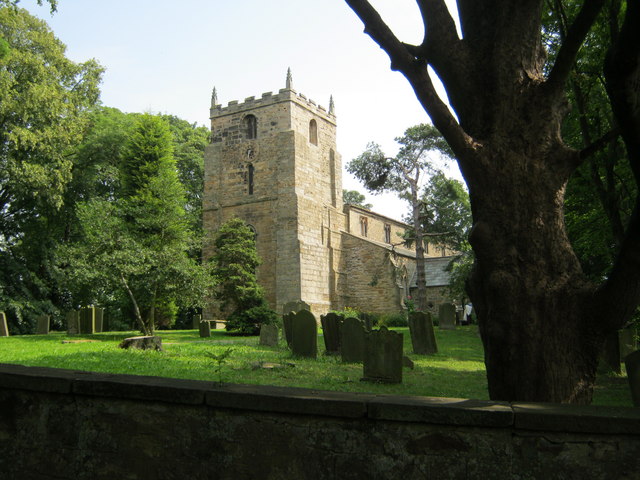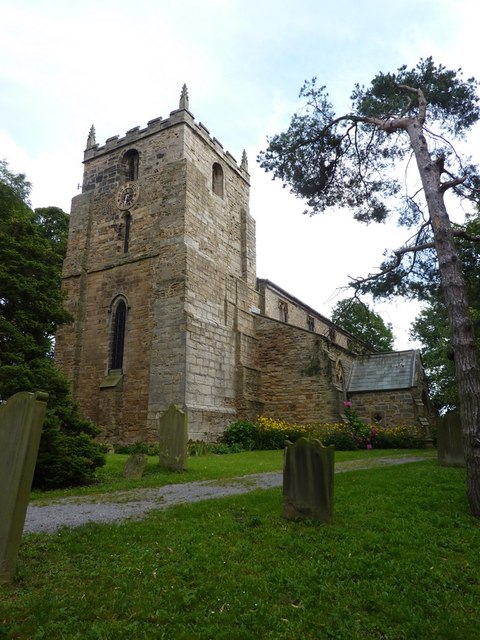Topics > County Durham > Civil Parishes in County Durham > Pittington Civil Parish > Pittington Parish, 1848
Pittington Parish, 1848
The ancient parish of Pittington covered a larger geographical area compared to todays Civil Parish of Pittington. The ancient parish included Shadford, until 1841, when it became a separate parish, which also included most of the township of Sherburn. 'The village' referred to below is probably Low Pittington; just to confuse things, this was previosly often called North Pittington!
PITTINGTON (St. Lawrence), a parish, in the S. division of Easington ward, union, and N. division of the county, of Durham, 3½ miles (E.N.E.) from Durham; containing, with the townships of Shadforth and Sherburn, 4,577 inhabitants, of whom 2,295 are in Pittington township. This parish, also called Pittington Hallgarth, from the church being situated at the hamlet of Hallgarth, comprises by computation 6,330 acres, of which about 2,750 are in the township. There are several coal-mines, and the produce of them is abundant: the Belmont colliery, near the turnpike-road leading from Durham to Sunderland, yields coal of excellent quality, which is shipped at Sunderland for the London market. Limestone also abounds. A railroad, eight miles long, extends from the Hallgarth colliery to the river Wear at Painshaw. The village is about half a mile to the north of Hallgarth. The living is a discharged vicarage, valued in the king's books at £14. 14. 2.; net income, £469; patrons and appropriators, the Dean and Chapter of Durham. The church is an ancient structure, principally in the Norman style, and had formerly two chantries, in honour of St. Mary and St. Katherine: in the churchyard, among other memorials, are, the effigy of a cross legged knight, and a coffinshaped stone with a Saxon inscription. At Shadforth is a separate incumbency.
Extract from: A Topographical Dictionary of England comprising the several counties, cities, boroughs, corporate and market towns, parishes, and townships..... 7th Edition, by Samuel Lewis, London, 1848.
Note: Shadforth had actually become an independent parish in 1841, so this entry was a little out of date in 1848!

Co-Curate Page
High Pittington
- Overview Map Street View High Pittington is a village in County Durham, located about 4 miles north-east of the city of Durham. The village extends into the hamlet of Hallgarth. …

Co-Curate Page
Hallgarth
- Hallgarth is a hamlet ajoining the south of the village of High Pittington in County Durham. HALL-GARTH, in the parish of Pittington, S. division of Easington ward, union, and N. …

Co-Curate Page
Sherburn Township, Couty Durham, 1848
- SHERBURN, a township, partly in the parish of Pittington, and partly in that of Shadforth, S. division of Easington ward, union, and N. division of the county, of Durham, 2¾ …

Co-Curate Page
Shadforth, 1848
- Shadforth was a chapelry in the ancient parish of Pittington, until 1841, when it became an independent parish. SHADFORTH, a chapelry, in the parish of Pittington, S. division of Easington …

Co-Curate Page
Church of St Laurence, Hallgarth
- Overview Map The church is a Grade 1 Listed building.


Co-Curate Page
High Pittington
- Overview Map Street View High Pittington is a village in County Durham, located about 4 miles north-east of the city of Durham. The village extends into the hamlet of Hallgarth. …

Co-Curate Page
Hallgarth
- Hallgarth is a hamlet ajoining the south of the village of High Pittington in County Durham. HALL-GARTH, in the parish of Pittington, S. division of Easington ward, union, and N. …

Co-Curate Page
Sherburn Township, Couty Durham, 1848
- SHERBURN, a township, partly in the parish of Pittington, and partly in that of Shadforth, S. division of Easington ward, union, and N. division of the county, of Durham, 2¾ …

Co-Curate Page
Shadforth, 1848
- Shadforth was a chapelry in the ancient parish of Pittington, until 1841, when it became an independent parish. SHADFORTH, a chapelry, in the parish of Pittington, S. division of Easington …








